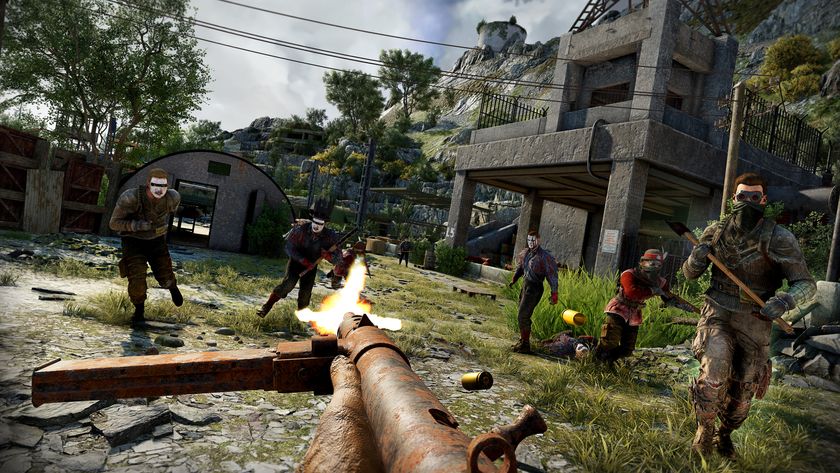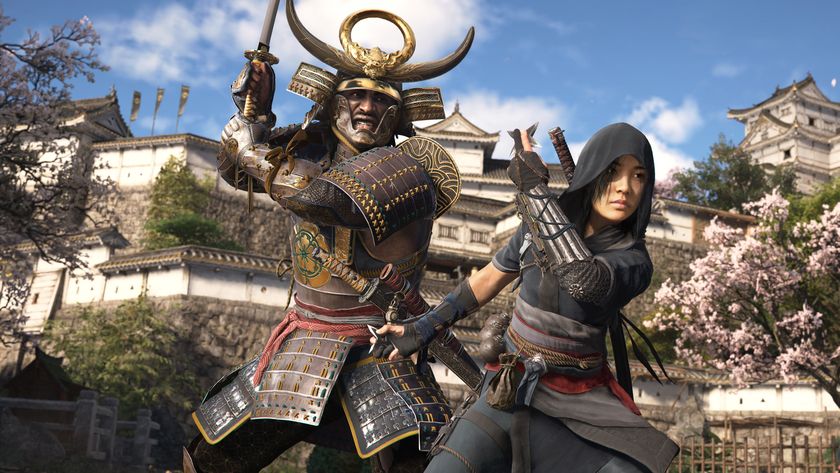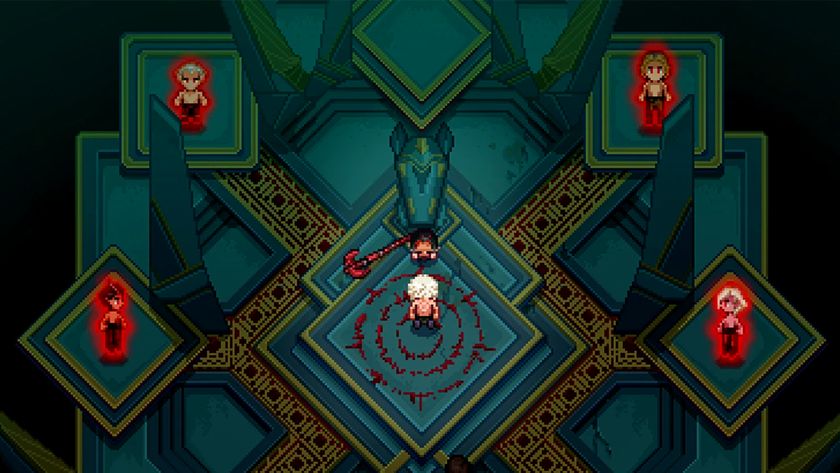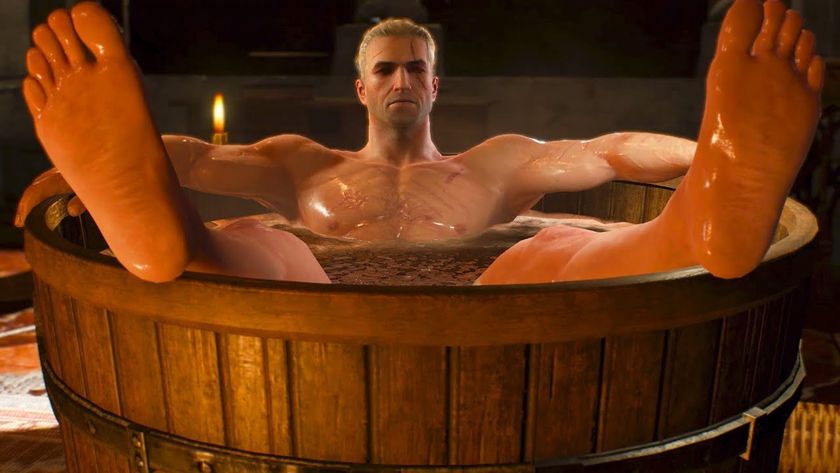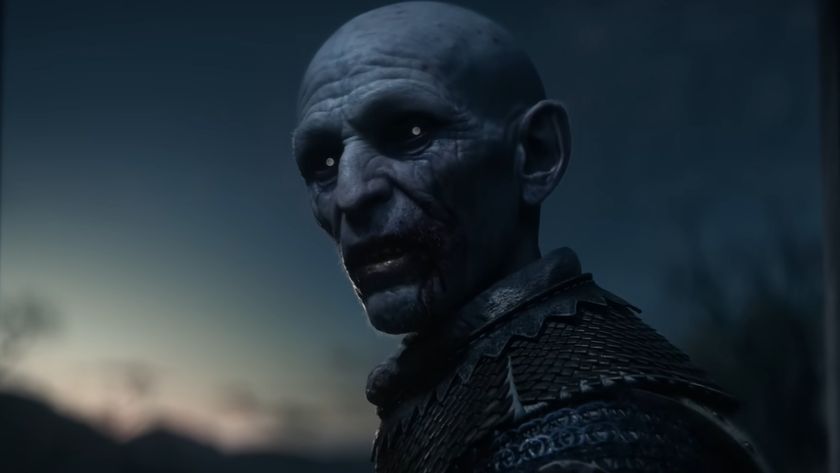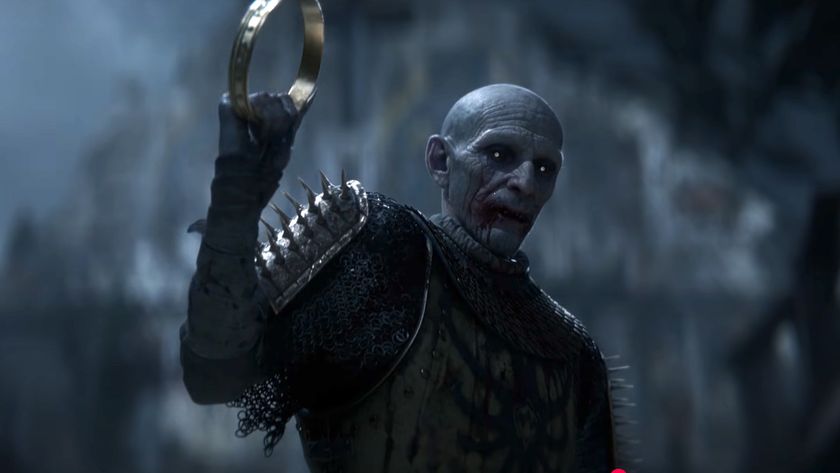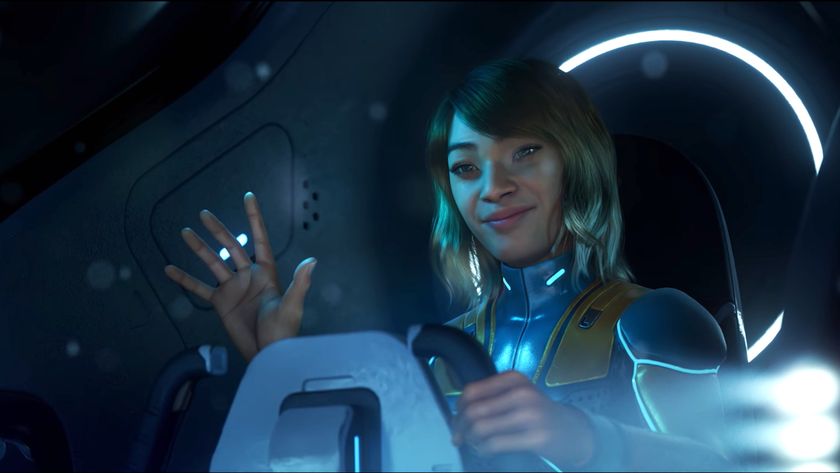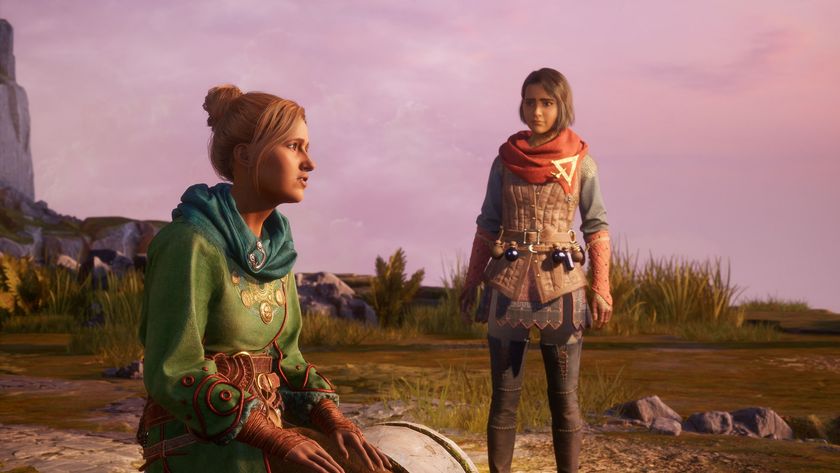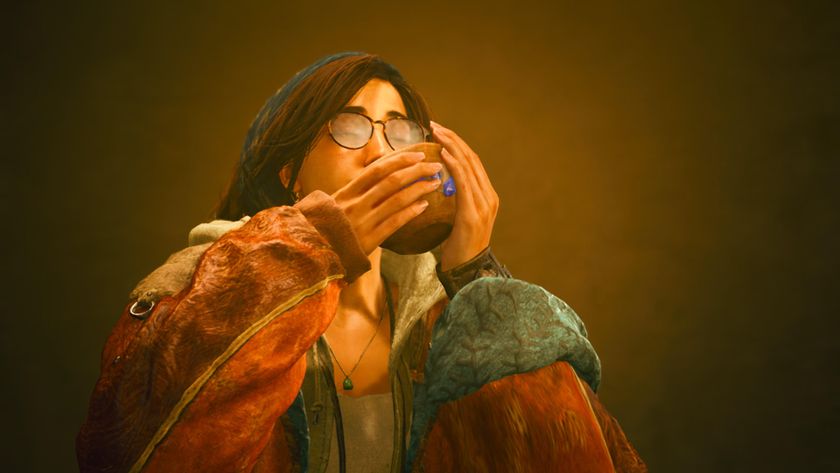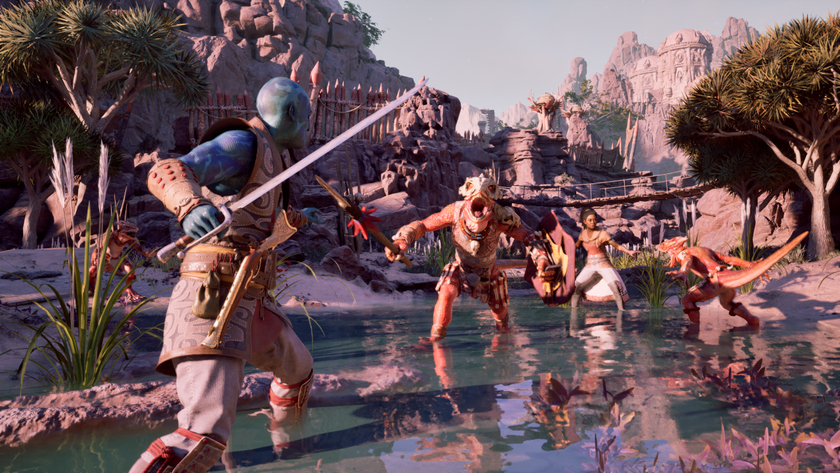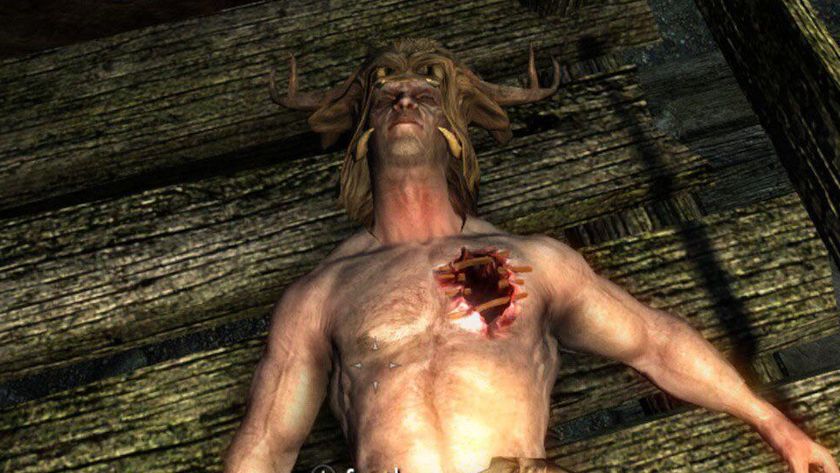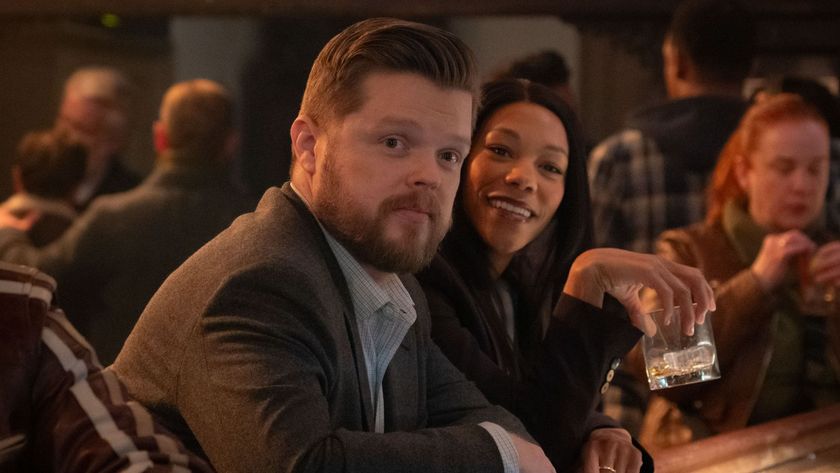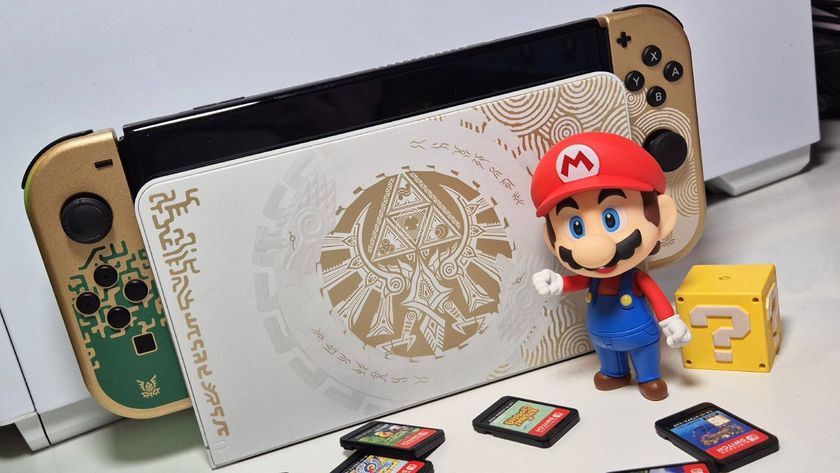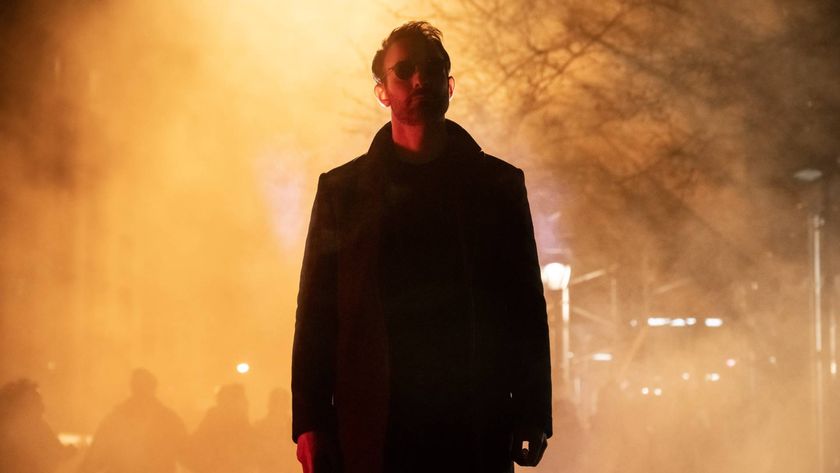Fable III versus Reality
EXCLUSIVE: Lionhead artists reveal how they transform the real world into colorful fantasy
Fable III is pure fantasy, right? After all, this is a game in which you wield magic, swing swords, fight monsters and marry multiple spouses... it must be fiction.
Well, yeah, but not as much as you might assume. As our exclusive interview with Fable III's Art Director reveals, there's a surprising amount of the real world mixed into the imaginative. And the designers at Lionhead have even provided us with exclusive comparison art to prove it.
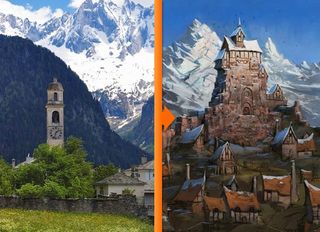
GamesRadar: Since the world of Fable is clearly fantasy, many players might be surprised to learn how much it is influenced by the real world. What are some of those inspirations?
John McCormack (Art Director, Lionhead): Fable has always been influenced by the our love of European history and the natural world and how these beautiful and familiar visual stories can hide a dark and twisted underbelly that moves it seamlessly into the realm of the ‘fairytale’. We get inspired by the stories that surround all the genuinely ancient and odd vistas, architecture, industry, fashion, culture, books and art of Europe’s past and like to play around with their origins and present an alternative view rather than a create a complete fantasy.
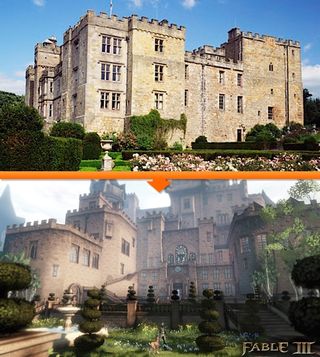
GamesRadar: Do you visit these locations in person, or go by memory and photographs?
JM: We do a lot of research at the beginning of each project and try to see what aesthetics work well together from varying periods. This is mostly done in the form of image sourcing, movie clipping, location photography, library trips and simple sketch work. Admittedly we don’t get to do as much of the location work that we’d like to due to time and budget, but we can always hope.
GamesRadar: How are real places then translated into the artistic style of Fable?
Sign up to the 12DOVE Newsletter
Weekly digests, tales from the communities you love, and more
JM: All the artists work from an Art Style Guide produced at the beginning of each project that lays out generally how things should be constructed and textured. I say generally because, as an artist and animator myself, I don’t want to take any creativity away from the individuals working on each piece. The guide is a general link to the image sourcing work that we’ve done during pre-production and a list of working practices with regards to style, form, palette, texel resolution, silhouetting and colour separation.
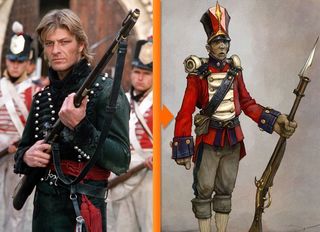
GamesRadar: We’ve read that Fable III is influenced mostly by 1800s, Dickensian Europe. Was that true of Fable I and II, or is the Fable franchise moving into an Industrial Age?
JM: We’ve always tried to move the franchise around in time, much like the Blackadder series in order to not only progress the fiction and history of Albion but also for the opportunity to freshen up the art style… which keeps us happy. In Fable III, you play the son or daughter of the Hero of the previous game so we could only advance the aesthetic around 50 years or so, into the early industrial age. We got excited by this because this particular period was all about experimentation without automation. It was the age before everything worked. People were put in charge of incredibly dangerous machinery and told to work it and if it blew up, they would simply be replaced. This dark but inventive dawn gave us ideas on what Albion could possibly produce and indeed who would be so nasty as to let it happen.
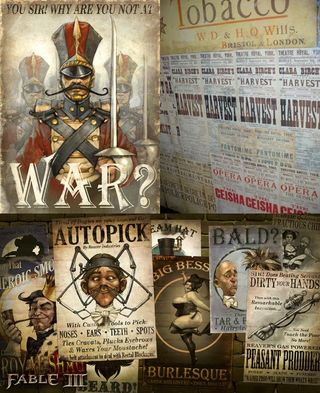
GamesRadar: How do you blend in increasingly advanced technology without losing the fantasy feel that fans expect?
JM: We’ve worked this into the fiction to a certain extent. As Albion advances technologically, the ‘fairytale’ aspect is being driven out of and below the cities. The more ethereal and haunting locales and beings have become even more of a ‘myth’ to the people of Albion than in previous games. These things still exist in swamps, caves, tombs, graveyards, woods etc but only a Hero would ever find himself in the position to confront them… or some poor fool who decided to leave the safety of his town at night. This is something that the world of Fable will never lose.
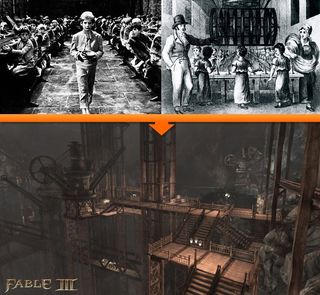
GamesRadar: How else have the environments evolved from Fable I and II to Fable III?
JM: Well we put a lot of effort into making Albion a grimmer place to be as its now industrialized and war torn and we’ve also spread around the map a bit more taking people to places a little further out beyond the mountains, but I think the biggest evolution is probably our first venture across the seas with Aurora. We really wanted to take a risk at seeing what it would be like for a European adventurer to find him/herself somewhere genuinely foreign and see how they would react in that environment. So, we started researching another land to the south across the sea which has a different aesthetic altogether, a different religious base, a unknown history, a mysterious culture and, of course, some crazy beasts.
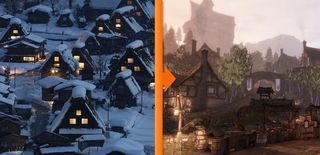
GamesRadar: Peter Molyneux has promised a “bigger, freer world” in Fable III, saying it’s larger than “any other game in the whole of Microsoft Games Studios’ portfolio.” Give us an idea of just how massive the world really is.
JM: It’s certainly the biggest Fable to date as the level design team here has managed to produce a staggering amount of regions for the player to explore. At last count there were over 80 scenarios open to the player, each bigger than any levels of the previous games. Although i’d imagine that probably only the most dedicated Fable players will get to see them all.
GamesRadar: Has that been a challenging step up in the ambition of the design?
JM: I don’t think a day goes by here at Lionhead where we aren’t challenged in some way to push the boundaries of the design. We’re very proud of the work we’re producing here but it’s never an easy ride. It would be easier for us to knock out a sequel using previous tech, assets, designs etc but that is not something that would satisfy the folk that work here and not something we’d want the paying public to endure. We try to do everything we can to freshen things up in every aspect of our work.

GamesRadar: What's your favorite new environment in Fable III, and can you explain how it came to life?
JM: I think my favourite region in the game is probably Bowerstone Industrial just purely for the atmosphere. For me it’s not just about the visuals, it’s about what happens when you get a successful cohesion of the aesthetic, the score, the ambient audio track, the dialogue and the gameplay. This region plays as the dark reflection of the opulence of his royal beginnings and does so quite successfully in my view. There are other regions that come close such as Table Top, Sunset House, Brightwall and Shifting Sands that will surprise the player when they see them but I think Industrial is at the heart of what the game is about.
GamesRadar: Name another game that has brought its world to life in a way that particularly impresses you.
JM: For me, I keep coming back to the purity of Shadow of Colossus (or indeed, Ico). Again, it’s about the successful connection between the various elements of the design that is done with such conviction and vision that you want to find out more about the history and mysteries of that place. Strangely, there are many games out there that have impressed me more in terms of visuals and strong design but, for some reason, I keep wanting to ride my horse and just stare at a waterfall. It’s kinda therapeutic.
To see all of our exclusive new Fable III art, head to ourscreenshot gallery.
Aug 20, 2010


How weaving this tale will take you on unexpected turns

We pit the famous game designer against his harshest critic: himself!

Peter Molyneux gets nostalgic and introspective
